Activities breakdown
Web redesign & SEO
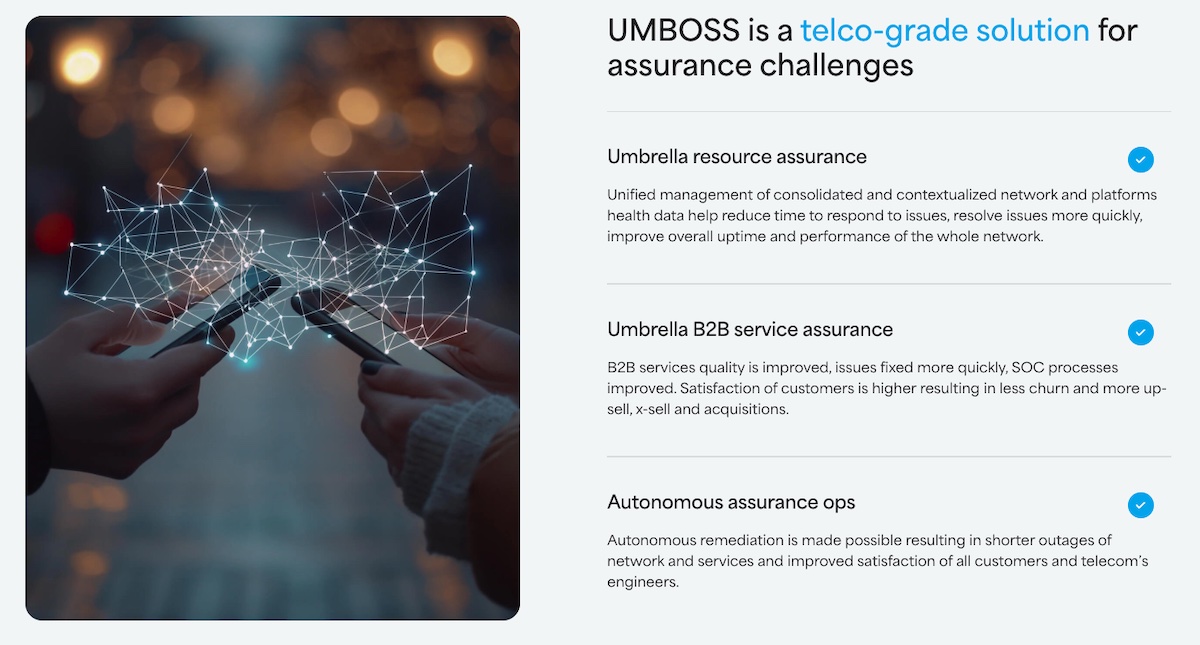
We have divided activities into three parts:
- Domain change & content migration: focused on the successful migration of the website to a new domain. The main goal was to maintain organic rankings and page authority during the transition to a new website.
- New Website development: focused on new website architecture with optimal foundations for SEO and user acquisition
- Post launch user acquisition: after successfully moving to a new website, our focus shifted to new user acquisition activities.
Domain change & content migration

A seamless transition with minimal impact on organic rankings & traffic was ensured through a four-step process:
- Content Mapping: thoroughly assessed the existing content’s relevance, performance, and SEO value, identifying items for migration.
- Content Migration: transferred the selected content to the new domain, aligning with its structure.
- Redirects: set up redirects from old to new URLs to keep link equity, guide users and search engines, and retain search rankings.
- Post-Migration Monitoring: tracked the site’s performance and SEO post-migration, making necessary adjustments during search engine re-crawling and re-indexing.
New Website development
- Sitemap definition: created a new sitemap based on keyword research
- URL structure & Information architecture: established the URL structure based on strategically important keywords (by volume and business priority), adhering to criteria for optimal SEO optimization.
- Website SEO Tags: optimized page titles, meta descriptions, and H1 tags.
- Review of Wireframes: checked high and low fidelity wireframes produced by the development team and proposed necessary changes. This ensured the wireframes aligned with the strategic goals and provided an optimal user experience.
- Technical Website Audit & Recommendations: provided a report for the development team and conducted implementation checks. This included a detailed analysis of site performance, security, and technical SEO aspects to ensure the website met all necessary standards.
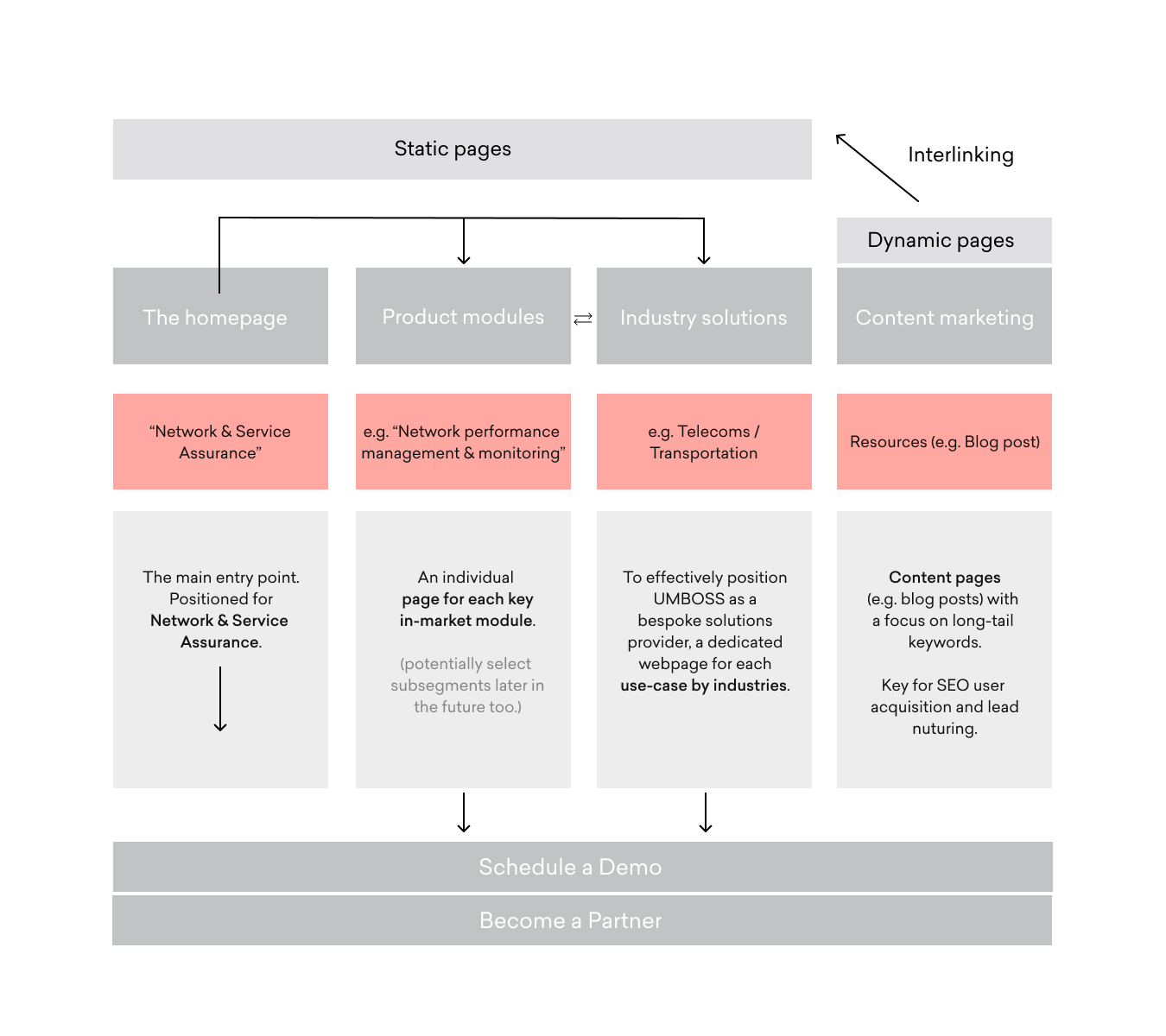
Post-launch user acquisition
Post-launch, we focused on driving new user acquisition through:
- Regular Monthly Maintenance: Included both technical and onsite SEO.
- Content Creation & Optimization: Developing new content and optimizing existing content as needed.
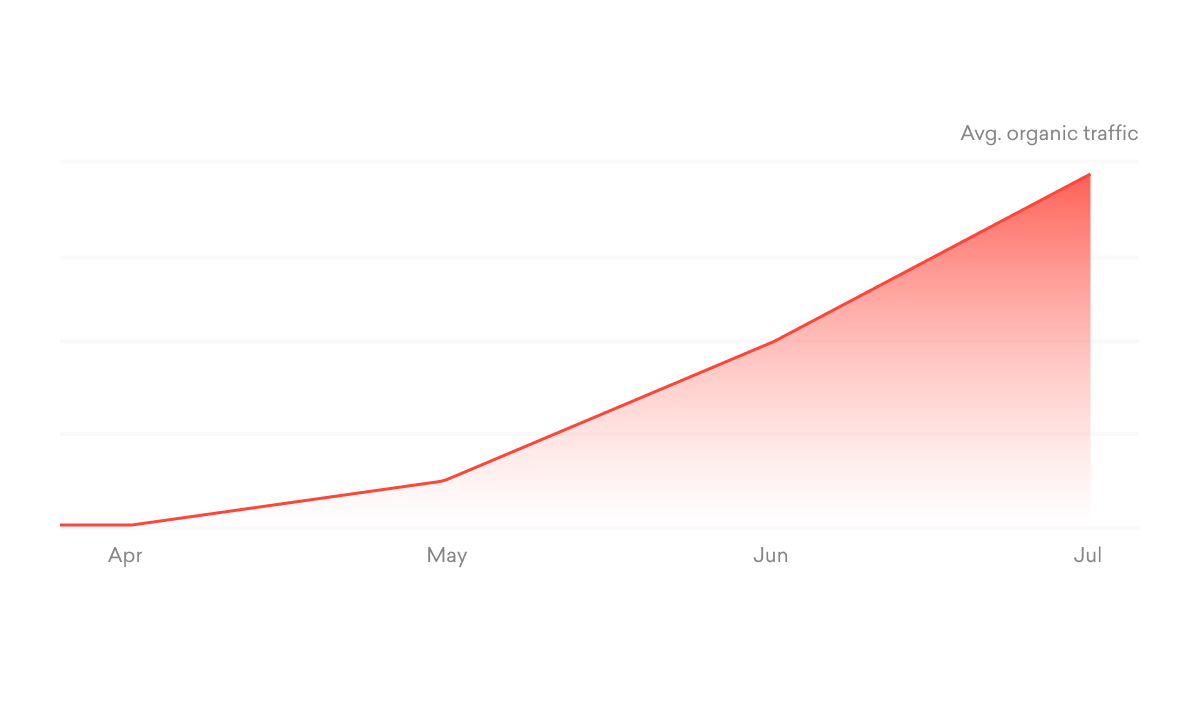
Content marketing
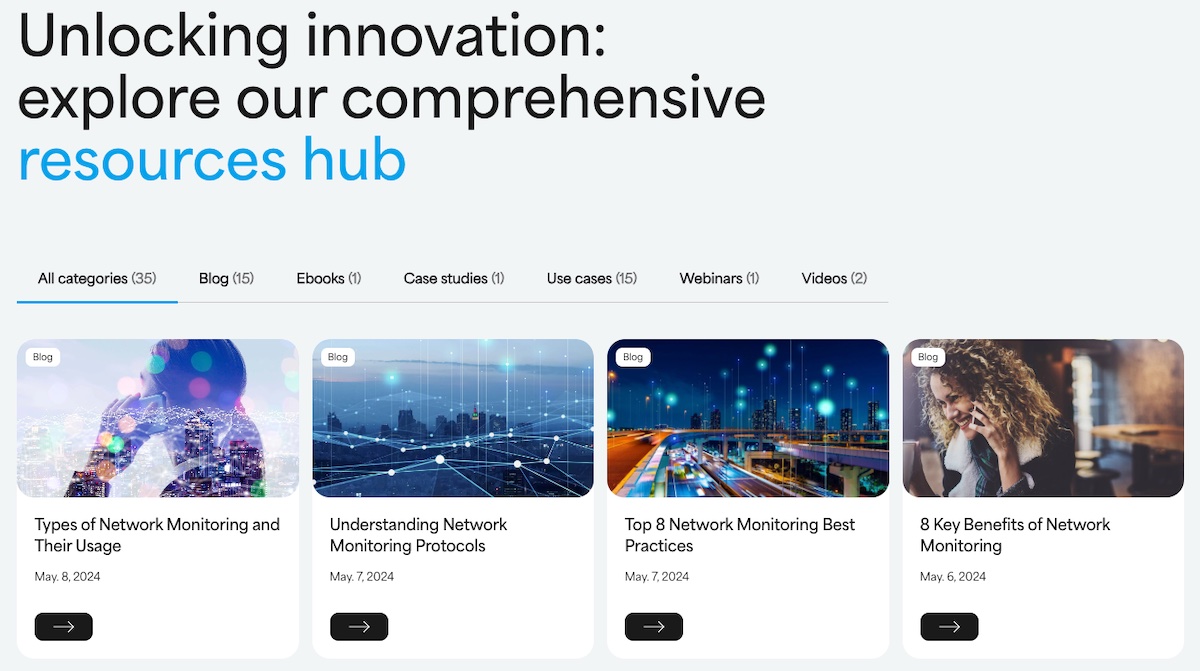
Our content marketing strategy involves leveraging tailored content to educate and engage target market groups, establish brand trust, and position Umboss as a leading player in the network and service assurance industry.
Content marketing activities:
- Existing content analysis: We have thoroughly evaluated the performance of existing content to identify strengths and areas for improvement.
- Keyword research: conducted extensive keyword research to uncover ranking opportunities.
- New blog post & gated content guidelines: created (and still are) new content guidelines that align with the customer journey, including blog posts and gated content like e-books and whitepapers. By crafting content that resonates with these segments and speaks directly to the unique needs of decision influencers and decision-makers, we aim to guide our audience toward recognizing Umboss as the definitive solution for their network and service assurance needs.
- Content optimization: We improved existing content by optimizain SEO tags, integrating targeted keywords, enhancing readability, and ensuring alignment with user intent.
- Optimizing low-performing content: We enhanced underperforming content by merging it with complementary topics, removing outdated information, and rewriting for better clarity and engagement.
- Optimizing content for more impactful keyword: We focused on keywords with low difficulty and higher search volume with the goal of attracting more organic traffic
- Internal linking strategy: The goal is to improve user experience and SEO by strategically linking content to guide users deeper into the customer journey funnel.
- Content distribution: proposed a content distribution plan to ensure maximum reach and engagement across various channels.
Marketing automation
The goal of marketing automation activities was to ensure that UMBOSS has a system in place which will leverage CRM database and email automation tools to contact, nurture and convert leads, as well as help support other marketing activities.
We also used marketing automation tools and processes to help facilitate communication and data exchange between UMBOSS and its partners when working with clients.
Key marketing automation activities included creating and implementing processes for lead segmentation, lead scoring & qualification, lead nurturing through email marketing, and supporting other marketing and sales activities through process automation.

Direct outreach
The outreach process involved several strategic steps to engage with potential business clients, build relationships, and convert leads into clients in order to grow a partnership network across target markets.
In order to create an outreach workflow we combined a set of outreach tools integrated with CRM systems to engage with target accounts, track interactions and schedule regular check-ins.
Through personalized outreach messages we were able to formulate a compelling value proposition that clearly articulates the benefits of the partnership model and assure meetings with potential partners.
We aimed to create a scalable B2B outreach model that can be easily expanded to handle increased volumes of prospects while maintaining effectiveness and personalization across different markets.
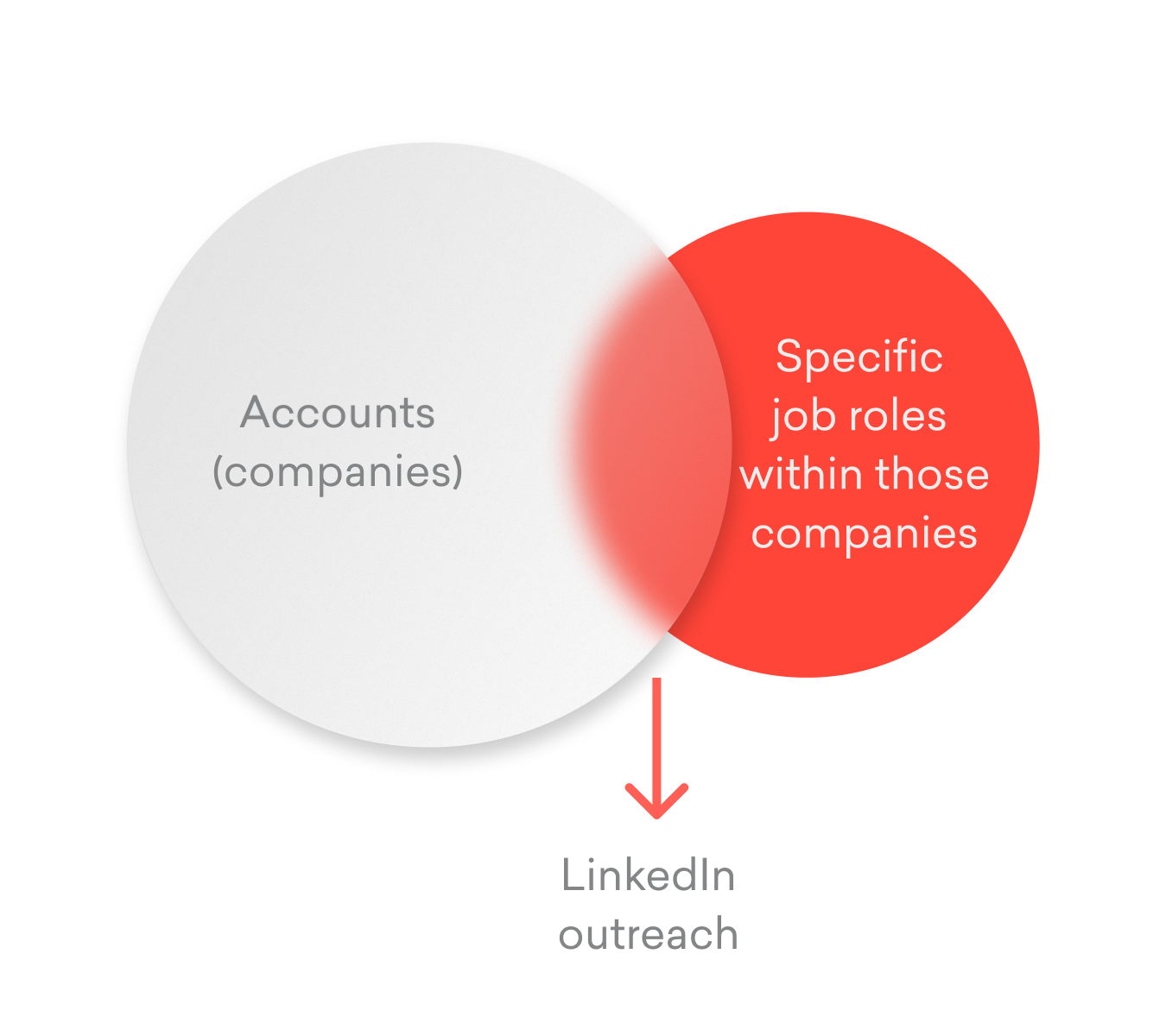
Digital advertising
The focus of our digital advertising activities was on Google Search and remarketing.
- Google Search was prioritized as it reaches the highest intent audience.
- Re-engaging prospects with remarketing campaigns.
- A/B testing of campaigns and platforms was conducted, with the potential to transition to ongoing activities if they accomplish objectives.
We also utilized LinkedIn for very specific people and company (account) targeting.
One of the key elements of our digital advertising strategy was to align advertising campaigns with the buyer journey stages. This ensured that the right ad reached the right audience at the right time.
Differences from UMBOSS’s (or to be more precise, Inceptum’s) past marketing state:
- The new website was designed to be user-friendly, visually appealing, and conversion-optimized. It highlighted UMBOSS’s new product offerings and facilitated inbound marketing activities.
- The GTM strategy was meticulously crafted, focusing on comprehensive market research, clear strategy fundamentals, targeted growth strategies, and well-planned marketing campaigns.
- Various digital channels were used for growth: digital advertising, content marketing, search engine optimization, email marketing, digital outreach and so on.
- HubSpot was integrated smoothly into UMBOSS’s operations, enabling efficient lead management and automation of marketing and sales processes.










